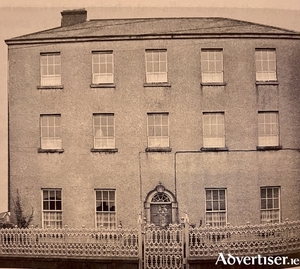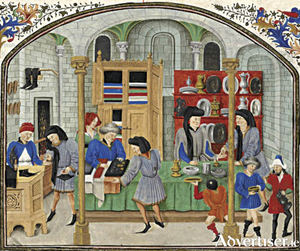Search Results for 'Ffrench'
7 results found.
Saving Galway’s sacred giant — campaign to restore St Nicholas' to be launched this summer

At the heart of Galway city stands a giant—quiet, steadfast, and weathered by time. St. Nicholas’ Collegiate Church, the largest medieval parish church in Ireland in continuous use, has watched the tides of history ebb and flow for over 700 years.
Why did the Bank of Tuam fold? – public talk

There was no such thing as a government bank guarantee in 1814, so when staff at Lord ffrench’s Bank of Tuam & Dublin realised there was a run on the bank on June 27, they pursued the only sensible policy available, and simply locked customers wishing to make withdrawals inside the building.
Through the glass darkly
I have always been fascinated by maps, especially old maps. One of the most famous is the Tube map - better known as the London Underground map - a schematic transport map of the lines, stations and services of the London Underground, known colloquially as "the Tube", hence the map's name.
Nick Cave and Benedict XVI on music and mystery
The late emeritus Pope Benedict XVI once wrote: “The art of music is uniquely called to instil hope in the human spirit, so scarred and sometimes wounded by the earthly condition.” It is fascinating to compare this insight with the reflections found in singer songwriter Nick Cave’s new book Faith, Hope and Carnage.
The default position for contemporary Irish Christians
Ireland has had the reputation for many centuries as the island of saints and scholars. The vast majority of these saints lived during the fourth to 10th centuries, the period of early Christian Ireland, when Celtic Christianity produced many missionaries to Great Britain and the European continent. The history behind the phrase begins with the Roman Empire’s collapse in the fifth century, Europe was in a state of serious intellectual and social decay as its institutions crumbled. Insulated on the western shores of Europe, Ireland’s institutions could continue to prosper and evolve without interruption leading to a period of intellectual, religious, and artistic superiority that has been called ‘Ireland’s Golden Age’. It is during this period Ireland earned the title ‘Insula Sanctorum et Doctorum – The Island of Saints and Scholars’.
Galway’s Pro-Cathedral, a building of some significance

At early Mass on Christmas morning 1842, there was a dreadful accident at Galway’s Pro-Cathedral during which 37 people were killed, and many more were injured. Known as the Parish Church, and completed just twenty-one years before, it was by far the largest Catholic church in the town, surprisingly built in preCatholic Emancipation times.
The power merchants who ruled Galway

Under Norman rule Galway rapidly developed from an obscure village into an important seaport with trade contacts all over Europe. This transformation was entirely due to the merchant community who made themselves into an oligarchy who not only owned and directed the town’s trade, but completely controlled the municipal government, the election of mayors, and, uniquely, the appointment of priests and wardens to St Nicholas’ Collegiate church. They enjoyed total power. They lived in opulent houses, many of which had elaborately carved doorways, secure within the walls of the town, indifferent to the Gaelic natives who were kept firmly outside the gates.*

